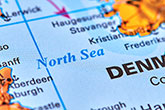What's up down under?: part one
Published by Louise Mulhall,
Editorial Assistant
Oilfield Technology,
Over recent years, Australia has seen a huge wave of investment into its oil and gas industry, spurred on by growing demand, both globally and in the Asia Pacific region. This surge of investment has seen Australia become host to some of the world’s biggest upstream projects, which look set to significantly expand the nation’s hydrocarbon output over the coming years.
The majority of investment has been directed towards projects across northern Australia, including Western Australia, Northern Territory and Queensland. A distinguishing feature of these new projects is that they have been designed to make use of the country’s significant natural gas reserves and focus predominately on LNG production rather than crude oil. According to Geoscience Australia, the country’s reserves are recorded at 132 trillion ft3, or 11th largest in the global rankings. The scale of these projects can perhaps be best understood when one considers that they are estimated to supply around 100 million t of additional LNG production by the beginning of the next decade. Such an increase would take Australia from 3rd place in global production rankings up to 1st place, overtaking Qatar, which is currently the leading exporter by convincing margin.
However, despite the significant investment of recent years, it’s not all plain sailing ahead for Australia’s oil and gas industry. A global economic slowdown, Japan’s decision to revert back towards nuclear power, and a reduced price difference between crude oil and gas has seen the profitability of many of the region’s major projects take a hit. The International Energy Agency has even announced that no fewer than six major LNG projects, valued at roughly US$200 billion, are likely to struggle to break even.
Major project examples
Prelude & Concert
The Prelude and Concerto fields, situated in the Browse Basin, 200 km offshore Western Australia, will act as host to the very first deployment of Shell’s Floating LNG (FLNG) technology. Rather than piping gas to an onshore plant, the Prelude facility will be able to cool and condense natural gas into its liquid form offshore. The key advantage of this system is the ability to move the processing facility to more isolated natural gas reserves that might have been too remote to be economically viable with conventional infrastructure.
Once operational, the Prelude facility is expected to produce 3.6 million t of LNG, 400 million t of LPG and 1.3 million of condensate. The facility will be able to store 220 000 m3 of LNG, 90 000 m3 of LPG and 126 000 m3 of condensate. According to Shell, the LNG output from the facility, which is due to be moored on location for 25 years, will be enough to comfortably meet the demand of a consumer like Hong Kong.
Ichthys
The colossal Ichthys project, lies some 220 km off the northern coast of Western Australia. The field, which when first discovered represented the largest hydrocarbon find in Australia for 40 years, contains estimated reserves amounting to 500 million bbls of condensate and 12 trillion ft3 of natural gas. Once Ichthys is up running and peak output, it should be capable of producing 8.9 million t of LNG and 1.6 million t of LPG and 100 000 bpd of condensate. The field is estimated to have a life-span of approximately 40 years.
However, like many major oil and gas projects in Australia, Ichthys has encountered delays and cost overruns. Earlier this year, INPEX, the operator of the project, announced that development would cost roughly 10% more than the original US$34 billion budget and that initial production would be pushed back from late December 2016 to September 2017.
Gorgon
The Gorgon project, operated by Chevron, covers the Gorgon and Jansz-lo gas fields and is located within the Greater Gorgon area between 130 and 220 km offshore northwest Western Australia. The Greater Gorgon area is estimated to hold approximately 13.8 trillion ft3 of proven hydrocarbon reserves. Initial production from the 15.6 million tpy LNG plant located on nearby Barrow Island is expected in early 2016. All of this makes the Gorgon project a giant operation and, according to Chevron, it is “the largest single-resource project in Australian history.” In fact, Gorgon was considered to be so significant that an early 2005 version of the ‘Draft Environmental Impact Statement/Environmental Review and Management Programme for the Gorgon Development’ stated that: “In response to increased revenues and economic growth, governments may increase expenditures, and reduce the average personal income tax rate to keep the ratio of public debt to GDP from falling.” Gorgon also happens to be the world’s most expensive LNG project, with total costs amounting to roughly US$54 billion after rising significantly over the development period. These rising costs, coupled with falling LNG prices and an oversupplied market, have taken some of the shine off the optimistic comments from 2005.
Part two to follow.
Adapted from a press release by Louise MulhallRead the article online at: https://www.oilfieldtechnology.com/exploration/28122015/whats-up-down-under-part-one/
You might also like
EnerMech secures two-year cranes extension in North Sea
The current agreement, which began in August 2022, will now run until at least August 2027.

